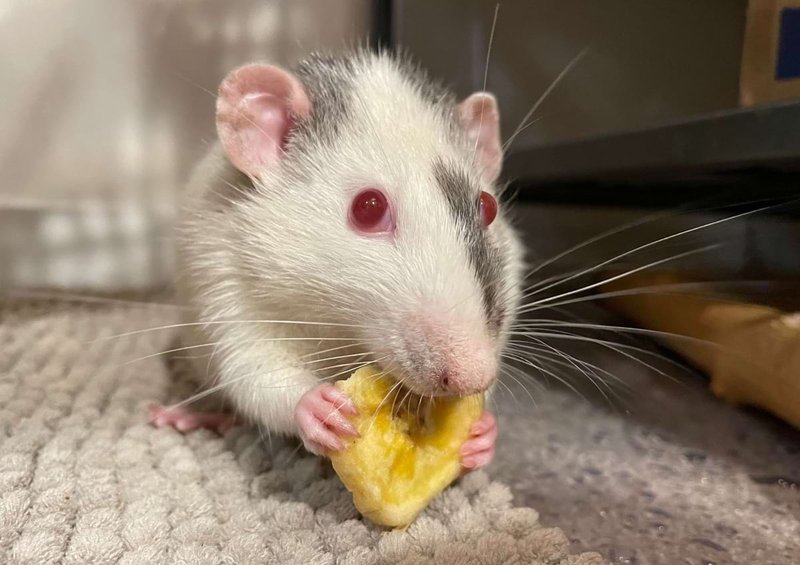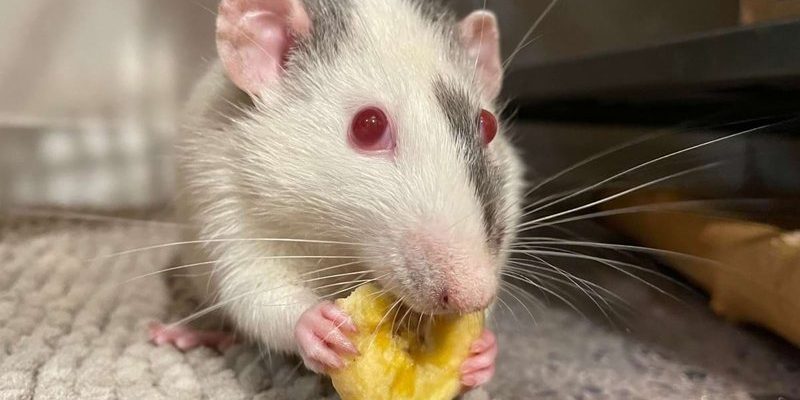
So, if you’re ready to open your heart and home to a top-eared rat, let’s chat about how to ensure your new friend feels welcome and cared for. From their diet to habitat and handling, we’ll cover everything you need to know so that your rat not only thrives but also becomes a happy member of your family.
Understanding Top-Eared Rats
Top-eared rats are a breed that’s often cherished for their friendly demeanor and sociable nature. They’re like the social butterflies of the rodent world. With their distinctive ears perched proudly on top of their heads, they are easily recognizable and often don’t mind a good cuddle session.
These little guys are known to be quite intelligent, which means they can engage in playful activities, solve puzzles, and learn tricks. If you’re looking for an interactive pet that can entertain you—and maybe even surprise you with their antics—top-eared rats are definitely worth considering. They thrive on social interaction, so having more than one can be beneficial for their mental well-being.
When bringing one home, remember that they’re quite sensitive to their environment. Changes in surroundings can stress them out, so it’s essential to create a calm and stable atmosphere right from the get-go.
Diet: What Should You Feed Your Top-Eared Rat?
The diet of your top-eared rat is crucial for its overall health and well-being. Think of their dietary needs like a well-balanced meal plan for an athlete—just like us, they need the right fuel to thrive.
A high-quality, commercial rat food should be the foundation of their diet. Look for one that’s specifically formulated for rats and includes a mixture of pellets and seeds. This helps ensure they get all the necessary nutrients. Additionally, you can supplement their diet with fresh fruits and vegetables. Some popular options include:
- Carrots
- Broccoli
- Apples (minus the seeds)
- Leafy greens like spinach and romaine lettuce
While it’s tempting to share your snacks, be cautious. Some human foods, like chocolate or citrus fruits, can be harmful to rats. Providing a balanced diet not only keeps them healthy, but it also helps maintain their vibrant energy levels—perfect for all that playful exploration!
Setting Up the Perfect Habitat
Creating a suitable habitat for your top-eared rat is like setting up a cozy little apartment for your best friend. A spacious and clean cage is essential. Look for a multi-level cage with plenty of room to climb and explore. Choose a cage with horizontal bars, which allow them to climb.
When it comes to bedding, avoid cedar and pine shavings; they can be harmful. Instead, opt for materials like aspen shavings, paper-based bedding, or even hemp bedding. Make sure to include enrichment items like tunnels, hammocks, and chew toys. This way, your little buddy has plenty to keep them occupied when you’re busy.
Also, consider where you place the cage. Rats are social creatures and enjoy watching everything going on around them. Keep their cage in a common area where they can feel involved but away from direct sunlight or drafts.
Handling Your Top-Eared Rat
Handling your top-eared rat the right way is essential for building trust and a strong bond. At first, you might want to let them come to you. Sit quietly near their cage and let them sniff your hand. This helps them get used to your scent, which is key in making them feel safe.
When you’re ready to pick them up, scoop them gently from underneath, supporting their body. Avoid grabbing them by the tail, as this can be quite stressful for them. Always talk softly and provide a calm environment. Here’s the thing—patience is your best friend while handling your new pet.
Over time, you can introduce more interactive play sessions. Use treats to encourage positive behavior. For example, you can train them to come to you when called. It’s a great way to keep them engaged and build a connection.
Common Health Issues in Top-Eared Rats
Just like any pet, top-eared rats can experience health problems. Being aware of common issues can make a huge difference in ensuring they live a long, happy life. One major concern is respiratory issues that can arise from poor ventilation in their cage or exposure to dust and odors.
Another issue to watch for is tumors, which can be quite common in older rats. Regular check-ups with a vet who specializes in small animals can help catch these potential problems early. It’s also a good idea to keep an eye on their weight and behavior. If you notice significant changes, it’s a good time to consult your vet.
Lastly, be observant. If they seem lethargic, have watery eyes or a runny nose, or aren’t eating, these could be signs that something’s not right. Early intervention is crucial for any health issues that might arise.
Socializing Your Top-Eared Rat
Socialization is key for top-eared rats. These little guys thrive when they have interaction, not just with humans but also with other rats. If you can, consider adopting a pair of rats or ensuring they have plenty of opportunities to mingle with their human companions.
The best way to socialize your rat is through consistent, positive interactions. Spend time each day handling them or allowing them to explore outside their cage in a safe, controlled environment. You might want to set up a play area with rat-friendly toys and obstacles. This stimulates their curious nature and keeps them active.
Remember, a lonely rat can become bored and anxious, so the more social engagement they have, the better. This ultimately leads to a happier and healthier pet that’s less prone to stress-related behaviors.
Caring for a top-eared rat can be a delightful journey filled with companionship and laughter. By understanding their dietary needs, setting up an inviting habitat, and learning the best ways to handle and socialize with them, you’re opening wide the door to a fulfilling relationship.
Rats are incredibly rewarding pets who give back just as much affection as they receive. So, as you embark on this adventure, remember to enjoy every moment—each cuddle and every quirky little behavior will remind you why you chose to bring home your top-eared friend. Happy rat-keeping!

